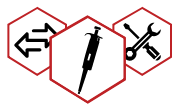AUTOPOL IV Automatic Polarimeter
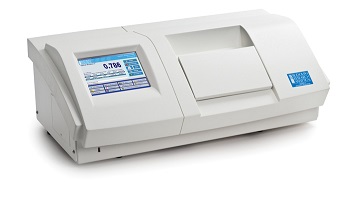
The AUTOPOL® IV is a microprocessor based automatic polarimeter that is available in one, two and six wavelength versions. The AUTOPOL® IV’s features include: readout in Specific Rotation, Optical Rotation, and concentration, customer defined and labeled programs for push button readout, large LCD display and touchscreen user interface, temperature display and correction, push button wavelength selection, statistics, 3 USB ports, 1-USB 3.0, RS 232 and parallel printer ports.
Measurement Modes
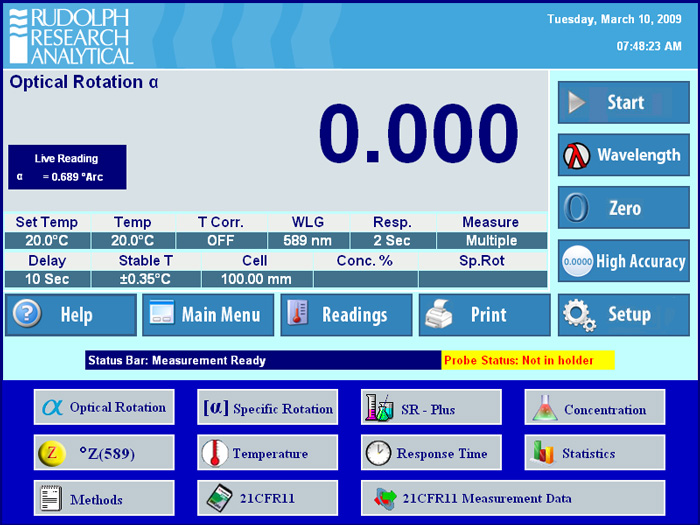
The AUTOPOL® IV Laboratory Polarimeter can readout directly in one of four measurement modes: Optical Rotation, Specific Rotation, Concentration or Specific Rotation Plus. Specific Rotation Plus allows a correction to be applied to a result for loss on drying. Each measurement mode can be activated via touchscreen selection. Sample tubes can be specified at any length (e.g. 50mm, l00mm, 200mm), or entered as a precise dimension (e.g., 199.98mm). Concentration is entered as a percentage.
Temperature Control of Samples in a Laboratory Polarimeter
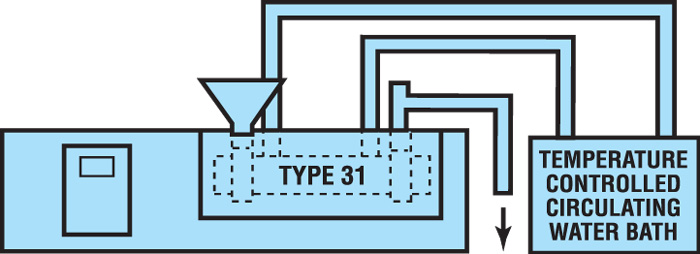
Temperature control of samples is allowed through rubber gasketting in the Autopol door, which permits tubing to be connected from an external temperature controlled Water Bath to the jacket of a jacketed polarimeter sample tube.
Laboratory Polarimeter Cells up to 200mm Long
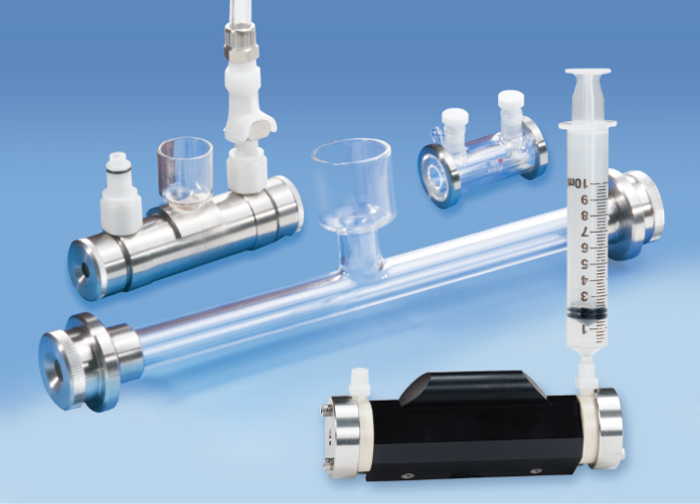
Instruments of some manufacturers accept only special sample cells, with maximum lengths of 100mm. Autopols accept standard sample cells up to 200mm long. A 200mm sample cell offers twice the sensitivity as the same solution in a 100mm cell. This is especially useful for solutions having small rotations. Also some pharmacopeia monographs require a 200mm (2dm) cell like the USP monograph for Methotrexate. Rudolph Research Laboratory Polarimeter sample cells are made to NIST standards; and the complete range of sizes and types are listed in Technical Bulletin 913. NIST certificates are available for cell length validation.
Sample Specific Programs
These programs allow for parameters such as tube length, concentration, specific rotation, wavelength, sample measurement range, measurement scale and temperature correction to be pre-specified.
The programs can be labeled with an alphanumeric name (e.g. Dextrose 2). The operator simply selects the sample program from the alphabetic list and the AUTOPOL’s is ready to make measurements. Sample specific programs can be set to read either Optical Rotation, specific rotation, concentration or user defined scales. A user defined scale is a linear equation based on the measured value and input parameters.
Multiple Wavelengths
The AUTOPOL® IV Automatic Polarimeter comes in single, dual and six wavelength models. Wavelength selection is completely automatic and is accomplished via menu selection. There are no lamps or filters to manually remove or insert. The following wavelengths are available: 365nm, 405nm, 436nm, 546nm, 589nm and 633nm. Optional wavelengths include: 578nm, 880nm and various other wavelengths are available; contact the factory for more information.
White-light Source Permits Spectral Versatility
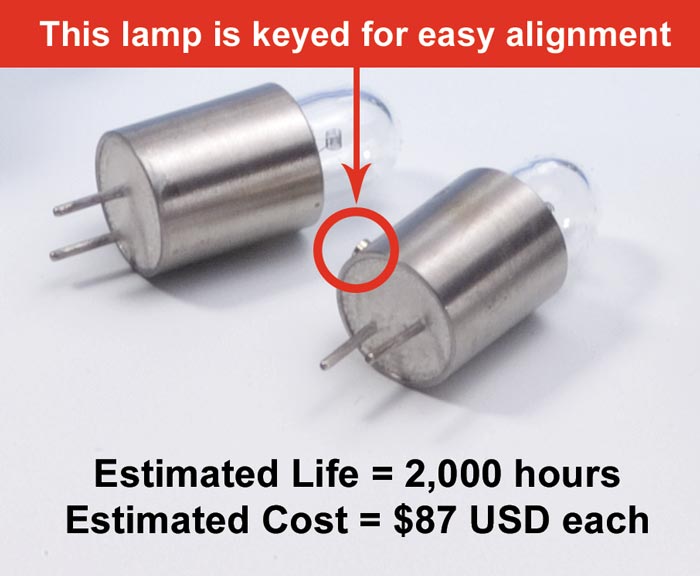
The tungsten-halogen lamp employed in AUTOPOL® Polarimeters is a compact, reliable, low-cost, high intensity light source that allows any desired wavelength in the visible spectrum to be selected by means of a narrow band multilayer interference filter. The AUTOPOL® standard 10nm bandwidth is specified to permit high energy throughput and sensitivity for sample transmittances of only 0.01 % (O. D. = 4), while minimizing the effects of sample ORD and colour.
Temperature Display and Correction
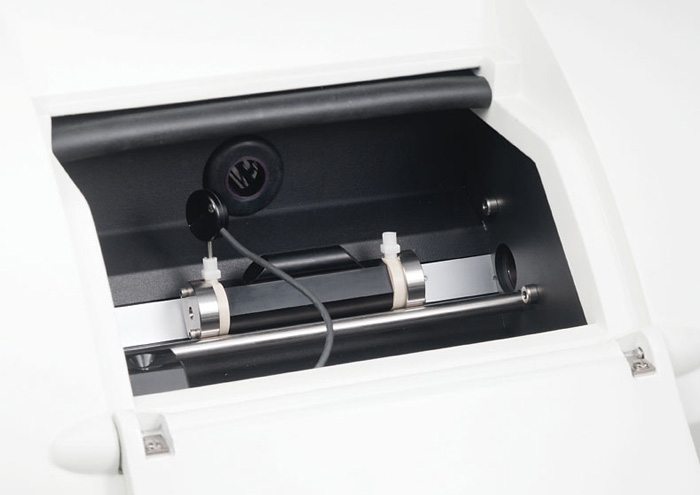
The AUTOPOL® IV Automatic Polarimeter comes standard with a temperature probe which can be inserted into the Polarimeter cell as shown to the left. The temperature of either the sample compartment or the solution itself can be continuously displayed.
Print Format
Numerous parameters, such as sample name, tube length, concentration, wavelength, time and date, temperature correction and statistics can be printed after each polarimeter measurement or after a group of measurements. This is accomplished by designating the required parameters, via menu entry, during the print format setup mode. A sample printout is shown below.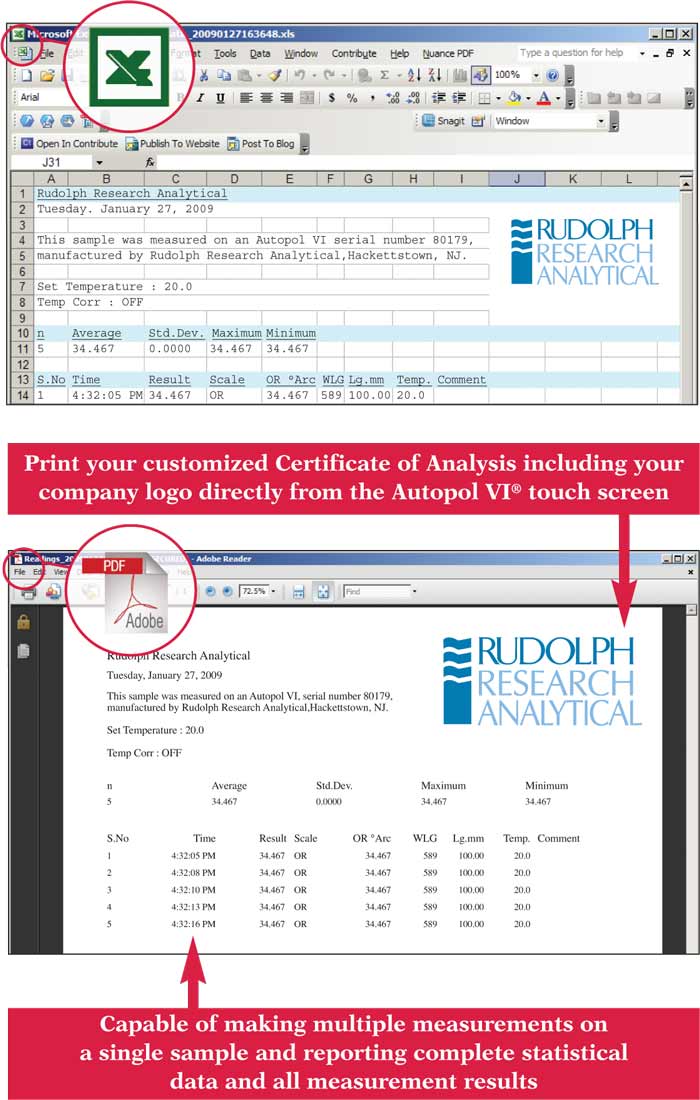
USB, RS 232, and Printer Communication
The AUTOPOL® IV Polarimeter offers 3-USB ports, 1-USB 3.0, 2-RS 232 serial ports, and an Ethernet port for connecting to your network. The RS 232 port allows data to be sent to a computer when the print key is pressed, when the computer requests the data or at predefined time intervals. Measurements can be remotely controlled from a host computer and the printout format and parameters can be selected via menu entry. Utilizing a USB port, all plug-and-play Windows compatible printers may be added.
Real-Time Clock
AUTOPOL®IV contains a real-time clock that tracks time and date. All measurements can be date and time stamped when printed out. The time is continually displayed in the upper right hand corner of the display.
Statistics
AUTOPOL® IV calculates the mean, the standard deviation and records the minimum and maximum readings for up to 999 measurements Measured data for statistical calculation can be printed in either one of two ways: automatically, at predetermined time intervals or manually, by pressing the print key. Statistics for a batch of samples can be accomplished by pressing the page feed key. Statistics on time varying optically active samples can be compiled by measuring a sample at a predetermined rate and for a predetermined number of measurements.
Range Limits
Sample range limits can be specified in sample specific programs, (e.g. 24.8° Arc – 25.7° Arc). When a range is specified and the measurement falls outside this specification the display will read “out of range”. Two TTL level signals are available for out of range conditions. These signals are useful for process control or alarms.
Quality
No matter which Autopol automatic polarimeter you choose, Rudolph uses the same high quality optics. While other manufacturers use Polaroid Plastic Dichroic Sheet Polarizers, Rudolph does not. Instead, Rudolph uses the same high quality Glan Thompson Calcite Polarizers in all its models.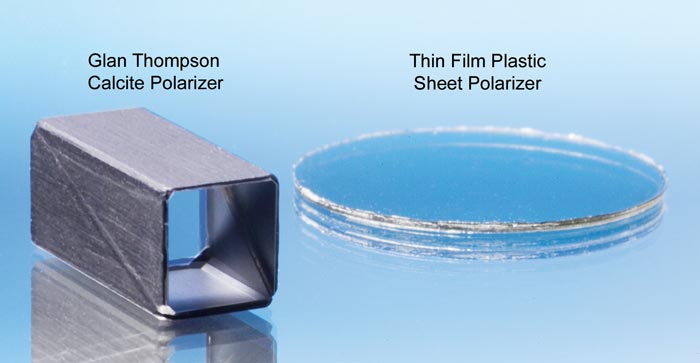
Why are high quality polarizing prisms important? Because prisms are two of the most critical optical components in the polarimeter. Polaroid polarizers are made of a polymeric plastic where the molecules are stretches and oriented in a specific direction so as to linearly polarize light. These types of plastic sheet polarizers are very inexpensive ($50.00 USD) and are vulnerable to heat, warp over time, deterioriate from moisture, and also have greater light absorption than Calcite Polarizers. In many cases, the plastic polarizers must be replaced in 3 – 5 years. Glan Thompson Calcite Polarizers are comprised of a carbon crystalline structure similar to diamond and have excellent light transmission characteristics. The quality of these prisms is so good, Rudolph guarantees its prisms over the life of the polarimeter.
Polarimeter Calibration and Validation
Rudolph understands that today’s cGLP/cGMP laboratories must validate measurement and temperature. Therefore Rudolph offers 6 different NIST Traceable Quartz Calibration Standards that can be matched to your application. The Autopol® IV also comes with a Temperature Validation Cell so that your temperature measurement can be traced to NIST. See Technical Bulletin 913 for more information.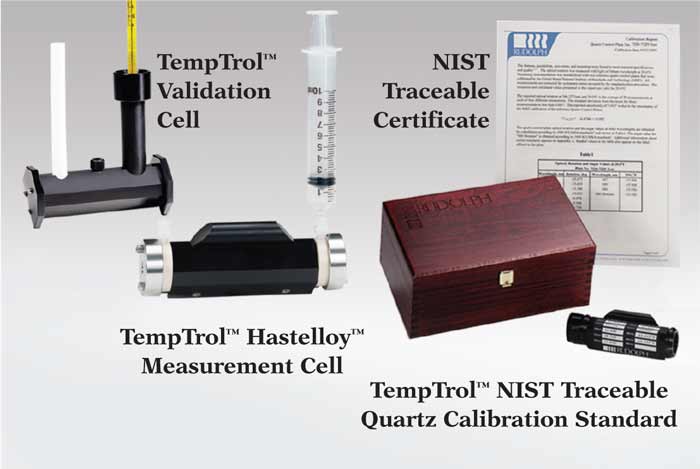
Rudolph PC Software
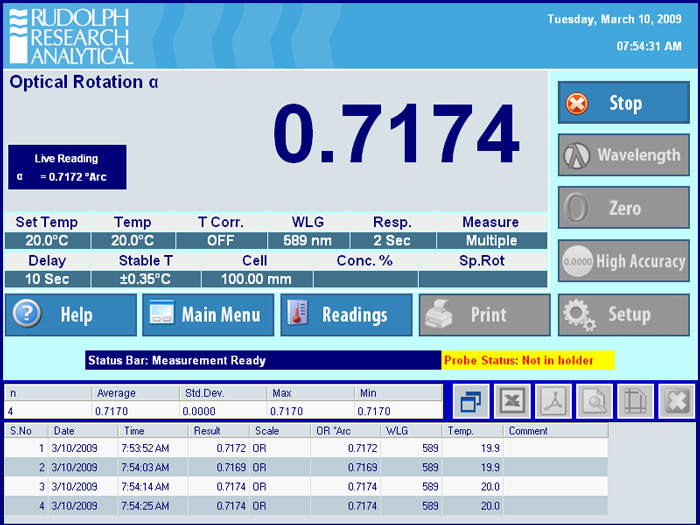
This software offers a simple, easy to use interface for collecting data from Rudolph Polarimeters. Rudolph PC is available in several different versions, including PC Basic, PC Purity, PC Sample Handling, and PC 21CFR Part 11; there is a version of Rudolph PC software available for all of our polarimeters. All data can be exported to Excel with the click of a button.
Optional on the AUTOPOL® IV Automatic Polarimeter — TempTrol™ Electronic Temperature Control System
The TempTrol™ System allows push-button temperature control of your TempTrol™ 100mm cell, 200mm cell, or Quartz Control Plate. Set the temperature, push “measure” and walk away. The AUTOPOL® IV will heat or cool to a predefined temperature and then provide you with the result, all in one easy step.
The TempTrol™ System will accurately control your sample temperature to within ±0.2°C.
Specifications
| Measuring Mode | Optical Rotation Specific Rotation Specific Rotation Plus Concentration User Defined Scale Sugar Degrees °Z(ISS) |
|---|---|
| Measuring Scale | Degrees Arc Optical Rotation |
| Resolution | 0.001° Arc Optical Rotation 0.001% Concentration 0.001 Specific Rotation |
| Accuracy | 0.002° up to 1°, 0.2% up to 5°, 0.01° above 5° |
| AP Accuracy Option | Autopol IV Single ±0.002° Arc Optical Rotation Autopol IV Dual ±0.002° Arc Optical Rotation Autopol IV Six Wavelength Accuracy (546nm and 589nm): ±0.002° Arc Optical Rotation |
| AP Resolution Option | Selectable Resolution: 0.01, 0.001, 0.0001° Arc |
| Reproducibility | 0.002° Arc Optical Rotation |
| Measuring Range | ± 89° Arc Optical Rotation, ± 999.99 Specific Rotation, 0-99.9% Concentration |
| Prism | Glan Thompson Calcite |
| Optical Wavelengths | 365nm, 405nm, 436nm, 546nm, 589nm, 633nm |
| Wavelength Selection | Touchscreen Selectable: 1, 2 and 6 |
| 21 CFR Part 11 Compliant Software | Yes with optional PC software |
| Temperature Control | By external water bath (Standard) TempTrol™ Automatic Electronic Heating & Cooling 15° – 40°C ±0.2° (Optional) |
| TempTrol™ Accuracy | ±0.2°C (optional) |
| Temp. Probe Range | 10°-100°C |
| Temp. Probe Accuracy | ±0.1°C |
| Measurement Time | 4°/sec slewing rate & 5 sec nominal settling time |
| Light Source | Tungsten-Halogen 6V, 20W, Avg. 2,000 hr. life |
| Sample Chamber | Accepts sample tubes up to 200mm |
| Data Storage | 32 GB Non-removable Compact Flash |
| Communication Interface | 3 - USB Ports, 1-USB 3.0, 2-RS232 Ports, Ethernet Port for Network Connection |
| Calibration | Automatic calibration via touchscreen |
| Operating System | Windows Embedded |
| Display | 8 inch colour, 800 x 600 pixel resolution with 400 nits of brightness. |
| User Interface | Touchscreen |
| Automatic Sensitivity Control | Measures samples with transmittance as low as 0.01% (up to O.D. 4.0) |
| Input Power | 100 - 240V, 50/60Hz |
| Operating Dimensions | 30"W x 11.5"H x 17"D, 762mm W x 431.8mm H x 279.4mm D |
| Shipping Dimensions | 42"W x 24"H x 21"D, 1066.8mm W x 609.6mm H x 533.4mm D |
| Operating Weight | 85 lbs (39 kg) |
| Operating Weight | 85 lbs (39 kg) |
| Shipping Weight | 115 lbs (52.1 kg) |
| Temperature Compensation | Temperature of the sample can be corrected to a reference temperature |
| Calendar/Clock | Battery-backed clock. Time and date sent to computer and printer |
